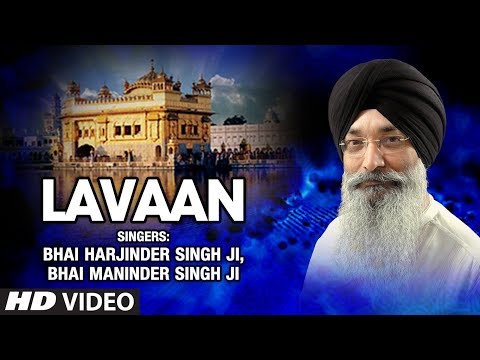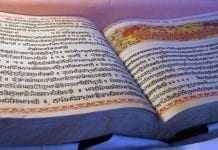|
Theme for the Week: Within the Sikh community, the married state is seen as a norm. The Sikh Gurus themselves entered into marriage and had a high regard for household life. The Sikh faith discourages vows of celibacy, renunciation or ascetic living styles. Marriage is also a spiritual experience. The Creator, the Divine, is silently showering us with gifts. There is only one gift that humans can give in return – their love and commitment. This they are empowered to withhold or return with gratitude. The Sikh marriage focuses on both of these experiences. The fourth Guru, Guru Ram Das, originally composed the ‘Laavaan’ to celebrate a spiritual union between the human soul and the Supreme Soul. These now form the basis of a successful union between a man and a woman in marriage as they lay a strong foundation on which the bride and groom commit the two bodies as one soul to the Giver of life. A marriage that is harmonious, but without divine realization, may be an ideal socio-cultural relationship at the human level, but falls short of being a spiritual marriage that commits to the Divine in terms of virtues, values and love. In Sikh tradition, marriage is a partnership of equals. It is also worth noting that, in principle, no consideration is given to caste or social status. No dowry is allowed. No day is considered as more auspicious than another for the wedding day. Hence no astrological considerations need to be made and no beliefs based on superstitions are to be observed in fixing the date of the wedding. The religious ceremony takes place in the presence of the Guru Granth Sahib. The fundamental part of the Sikh marriage ceremony (Anand Karaj – the blissful ceremony) is the reciting and singing of hymns called ‘Laavaan’ as the bride and groom circumnavigate (go around) the Guru Granth Sahib. They go around the Guru Granth Sahib four times. With each circumnavigation, a hymn reminds them that the Guru is at the centre of their lives and from whom they will receive guidance on their journey together. The verses this week will shed light on the messages underpinning the marriage hymns that will provide the foundation for a successful marriage – worldly and spiritual. ਪਰਵਿਰਤੀ (par-virtee) |
|
Quote: |
|
Message: The marriage ceremony begins with the first laav around the Guru Granth Sahib. By performing this round together, the couple accepts that the Guru is the centre of their lives. Here the Guru’s wisdom gives instructions for the conduct expected from the couple towards each other and towards members of the now extended family as they engage in household activity. They are also to show their love for the Guru and his wisdom through remembrance of the Divine and right behaviour. The Guru’s words are a treasure of divine knowledge. With knowledge of and through the practice of virtues such as truthfulness, compassion, contentment and gratitude among others, the couple move towards strengthening the bond with each other. Sinful behavior is discarded, and gradually, behavior that benefits others and uplifts the couple spiritually is adopted. ਸਤੁ ਸੰਤੋਖ ਦਇਆ ਧਰਮੁ ਸੀਗਾਰ ਬਨਾਵਉ॥ ਸਫਲ ਸੁਹਾਗਣਿ ਨਾਨਕਾ ਅਪੁਨੇ ਪ੍ਰਭ ਭਾਵਉ॥ Listen to the full hymn by Bhai Harjinder Singh: Watch this video on YouTube.
Etymology: From Sanskrit pravrutti (advance, use, conduct, continuance, etc.).
|






